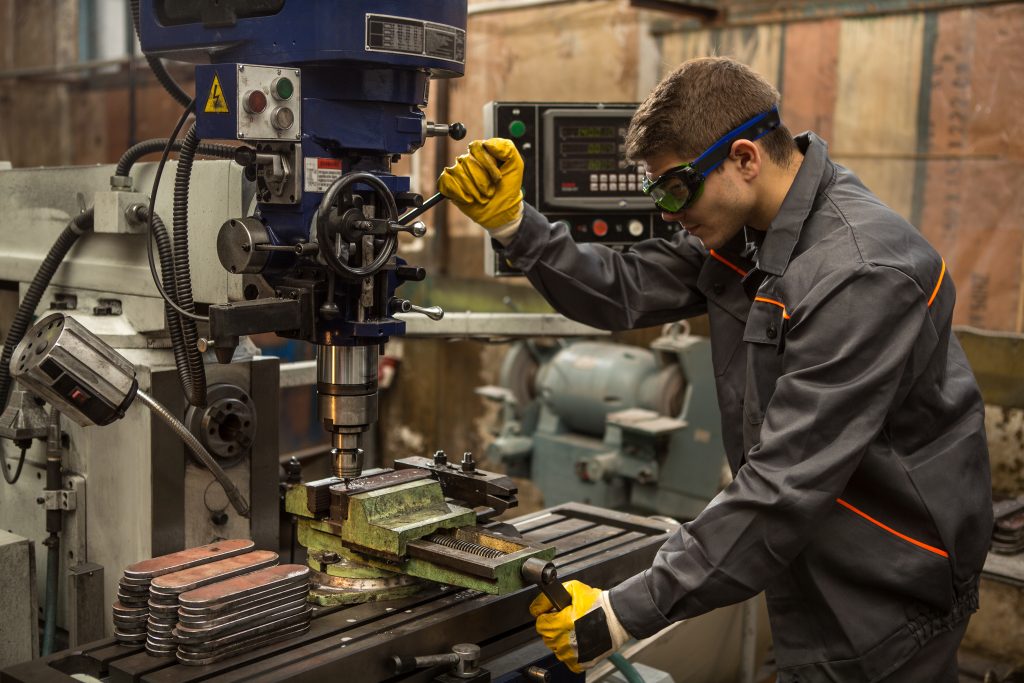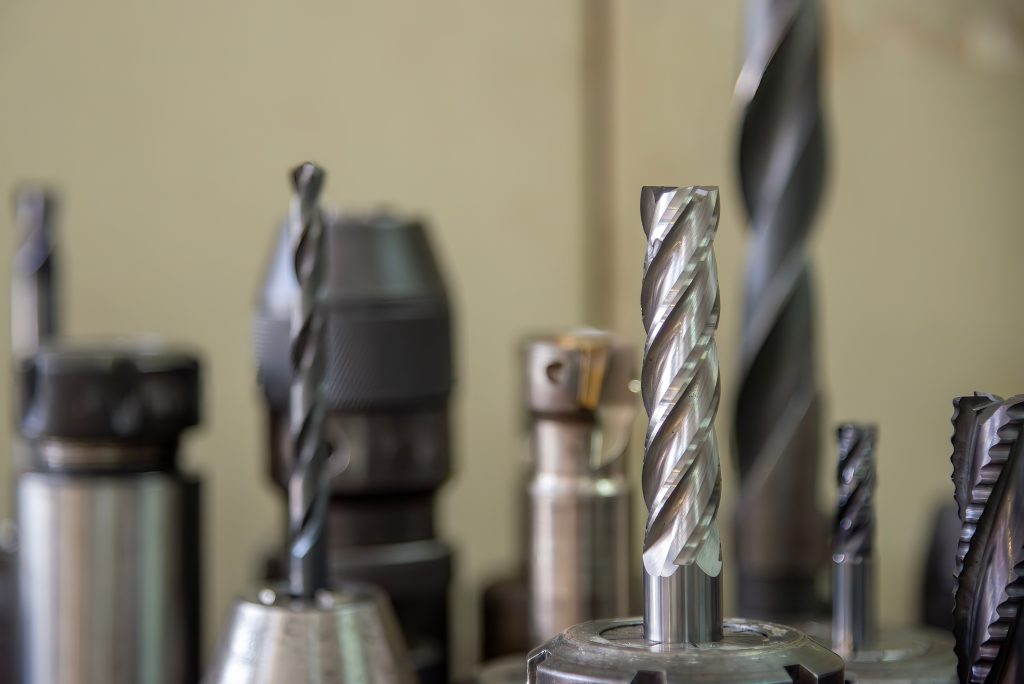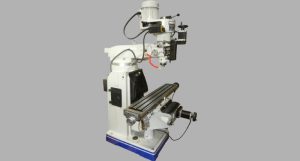The versatility and efficiency of milling machines play a vital role in manufacturing. Many people choose milling machines for processing. But how are you going to buy milling machine properly? Don’t worry, in this article, I will list detailed steps to help you select the right milling machine.
What can a Milling Machine do?
Milling machines use rotating tools to shape workpieces into various forms with high precision, which is widely used in manufacturing. Its application is extensive, especially in aerospace, mechanical manufacturing, and other fields.

How to Choose the Right Milling Machine
1.Confirm Your Needs
Based on material and size
- Materials:
Steel: Typically, regular CNC milling machines can handle steel processing. For harder steel, such as tool steel and stainless steel, you can choose high-performance CNC milling machines or use hard alloy cutting tools for cutting.
Aluminum: Aluminum is a lightweight metal, and compared to other metals, it’s easily workable. You can choose CNC milling machines for manufacturing and processing.
Plastic: Due to its wear resistance and corrosion resistance, you should choose a specialized milling machine for plastic processing. You can opt for a CNC milling machine for plastic, like a CNC carving and milling machine.
Composite Materials: Composite materials require high precision and cutting performance. They are typically processed using a CNC machining center or a specialized CNC milling machine designed for composite materials.
- Size:
Large size: For large-sized workpieces, you can choose a gantry milling machine or a horizontal machining center. These machines are suitable for processing large workpieces and are commonly used in the manufacturing of large components such as those used in aerospace areas.
Medium size: For medium-sized workpieces, you can choose a CNC milling machine. CNC milling machines have many functions and can handle large workpieces. They are commonly used for processing automotive parts and mechanical components.
Small size: For small-sized workpieces, you can choose a benchtop milling machine or a small vertical milling machine. These milling machines are suitable for working on smaller, highly precise items and are commonly used to manufacture small, intricate parts like those found in mobile phones and watches.
Based on machining process
- Simple Processes:
If the machining process is simple, you can choose a small CNC vertical milling machine or a manual vertical milling machine to do face milling, gear machining, hole drilling, and simple contour machining.
- Complex Processes:
If the machining process is complex, you can choose a CNC five-axis milling machine and a CNC gantry machining center. A CNC five-axis milling machine can handle intricate curved surfaces and multi-face machining. A CNC gantry machining center is suitable for multi-face machining of large workpieces.
- Single Operation:
For a single operation, you can choose a regular manual milling machine or a CNC vertical milling machine. If precision and efficiency are important, then you can opt for a CNC vertical milling machine.
- One Machine, Multiple Functions:
You can choose a CNC machining center. A CNC machining center meets various complex processing needs, including milling, boring, drilling, tapping, and gear cutting.
- Other Special Processes:
For machining needs that call for special processes like ultra-high precision or very fine machining, you might require a specially customized CNC milling machine. Additionally, special fixtures and cutting tools might be necessary to meet these specific requirements.
Based on accuracy and capacity
Sometimes, accuracy and capacity are interrelated.
- low accuracy&low capacity:
You can choose between a manual milling machine or a regular CNC milling machine. Manual milling machines require more effort to operate but can still be used for production.Regular CNC milling machines are good for low-volume production and offer automation and precision while operating.
- low accuracy&high capacity:
You can choose a regular CNC milling machine or a high-speed CNC milling machine. Both of these milling machines are stable and efficient.
- high accuracy&low capacity:
You can choose a CNC vertical milling machine, which is suitable for high-precision processing of small parts.
- high accuracy&high capacity:
You have the option to choose a five-axis CNC milling machine or a high-speed machining center. A five-axis CNC milling machine has multiple axes, allowing it to work in various directions simultaneously while maintaining precision. The high-speed machining center is used for large-scale, high-speed, and high-precision machining.
2. Confirm Axis
The number of axes on a milling machine is a key factor that affects its processing capability and price. Milling machines with different numbers of axes have these differences. Understanding the differences below might help you make decisions.
3-axis CNC Milling Machine
It has three moving axes – X, Y, and Z. This type of machine is used to process flat surfaces or simple curves.
4-axis CNC Milling Machine
Building upon the 3-axis system, it adds a rotary axis, allowing the machine to work on multiple faces of a workpiece.
5-axis CNC Milling Machine
It adds another rotary axis to the 4-axis system, making it even more effective for processing complex multiple surfaces and curves.
3. Consider Cutting Tools
Different machining processes, accuracy requirements, and production demands call for tools of different grades/materials. This should also factor into your cost decisions.
- Milling Cutter:
Made up of a cylindrical body and multiple replaceable blades, typically used for facing, slotting, side milling, and profiling. It’s moderately priced.
- Ball End Mill:
Consists of a handle and a ball-shaped head, mainly used for machining smooth surfaces. Slightly more expensive than regular tools.
- Form Milling Cutter:
It has one or more cutting edges, mainly used to machine cam grooves, gear profiles, and slots. It’s used for precision and custom machining and is relatively expensive.
- T-Slot Cutter:
The cutting part of T-Slot Cutters is shaped like a “T,” mainly used for machining concave grooves. It’s moderately priced.

4. Other Configurations
Deciding whether to add safety and convenience devices can affect your production efficiency and labor safety, ultimately impacting costs. Here’s a brief overview of some optional facilities for milling machines:
- Protective Cover:
It’s a safety device that covers parts around the milling machine to protect operators, equipment, and the working environment.
- Chip Conveyor:
Used to remove the waste chips produced during cutting to maintain cleanliness and prevent damage to the workpiece and machinery.
- Safety Sensing System:
It can be used to monitor the safety of the work area, ensuring the safety of operators and equipment.
5. Consideration Before Purchasing
- Quality Assurance:
You should choose a brand that offers quality assurance, ensuring durability through equipment and parts quality inspections and certifications.
- After-sales Service
Make sure the supplier provides professional after-sales services, including equipment maintenance, repairs, and technical support.
- Training Availability:
Ensure that professional training is provided to help your employees operate and maintain the equipment correctly.
- Hardware and Software Updates:
It’s important to ensure that the chosen brand provides ongoing updates to guarantee that the equipment functions and parameters work properly.
- Famous Brands:
Haas: It comes from the USA and is one of the world’s largest machine tool manufacturers.
DMG Mori: Created from the merger of Japan’s Mori Seiki and Germany’s DMG, it’s a globally renowned CNC machine tool manufacturer.
Mazak: Hailing from Japan, it is one of the world’s most well-known and largest CNC machine tool manufacturers.
Okuma: From Japan, it is a renowned CNC machine tool manufacturer.
Conclusion
That’s all about how to choose a milling machine. If you want to know more about milling machines, please contact us. We look forward to further discussion with you!











